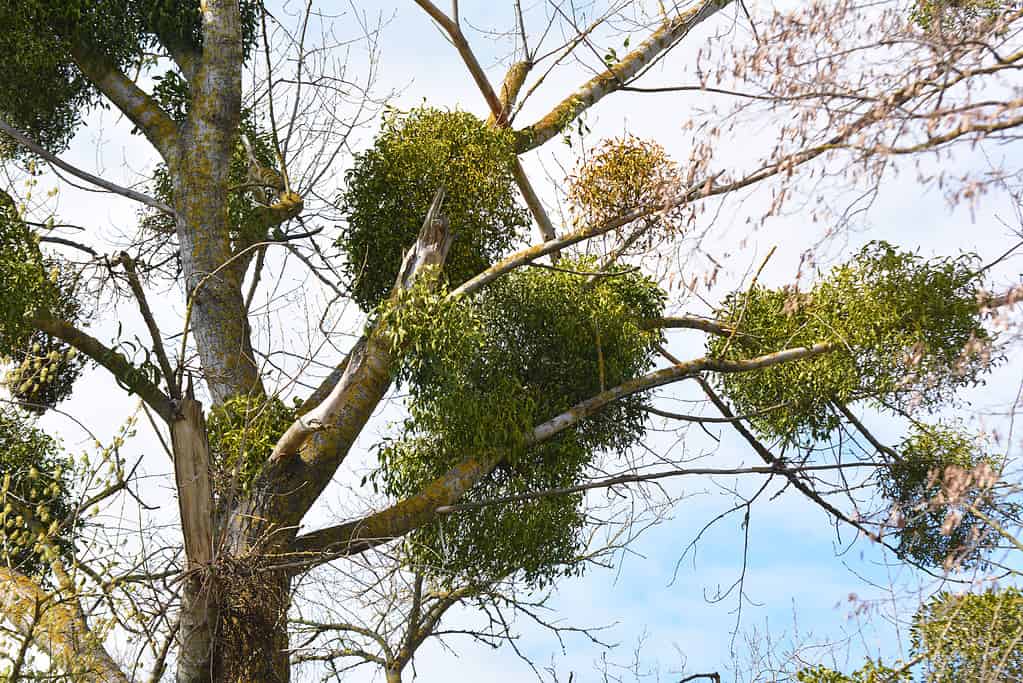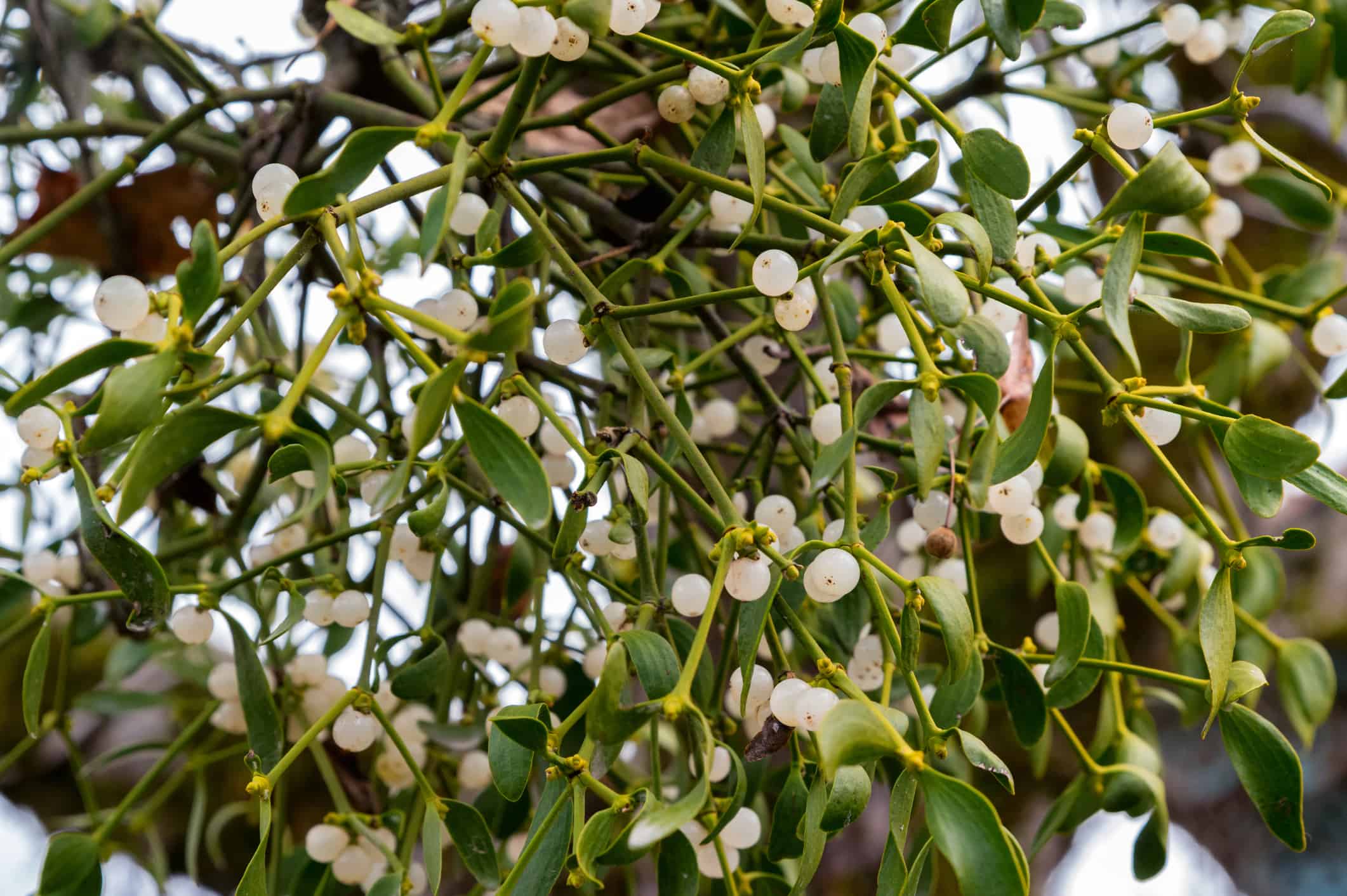Plants are among the world’s most important producers. Using nothing but water, air, and sunlight, they secure their energy and provide countless organisms with food and shelter. But not all plants are so generous. There is a seedier side to the plant kingdom, whose inhabitants rely partially or even entirely on their neighbors to meet their nutritional needs. These parasitic plants have developed myriad ways of tapping into their hosts, claiming the fruits of their labor.
In this article, we’ll look at five species of parasitic plants and find out how they make or take their living. We’ll learn what types of parasites they are, what organisms they parasitize, and how reliant they are on their hosts.
1. Beechdrops (Epifagus virginiana)

Though they are parasites, beechdrops in a forest indicate a healthy ecosystem.
Beechdrops are parasitic plants that grow exclusively on the roots of the American beech tree, Fagus grandifolia. They are obligate parasites and do not photosynthesize, meaning they rely entirely on their host plant to complete their life cycle. Without chlorophyll, beechdrops derive all their nutrients from the tree they are attached to. They quickly wither away if their connection with their host beech is disrupted.
Beechdrop seeds remain dormant in the seed bank until chemical signals from the shallow roots of nearby beech trees trigger them to germinate. As they grow, they insert a special parasitic organ called a haustorium, into the roots of their host. Over the growing season, the beechdrops gather enough water and nutrients to produce many beautiful but tiny flowers along their coppery brown stems. Interestingly, though their relationship is parasitic, beechdrops do not appear to cause any harm to their host tree. The presence of beechdrops in a forest signals that the ecosystem is healthy and has not suffered recent disruption.
2. Paintbrushes (Castilleja sp.)

Though they can survive independently, paintbrushes frequently appear alongside the grasses and forbs they parasitize.
Known as the paintbrushes or prairie fires, the genus Castilleja includes nearly 200 species of plants, all of which are root parasites. Unlike beechdrops, however, they are facultative rather than obligate parasites and do not strictly require host plants to complete their life cycles.
In nature, paintbrushes are found near the grasses and forbs whose roots they attach to. If you didn’t know they were parasites, you’d never guess it by looking at them. They produce chlorophyll and usually do photosynthesis well enough to support themselves if necessary. If suitable host plants are nearby, however, they will readily attach themselves below ground and siphon away nutrients for their own use. This is known as hemiparasitism.
3. Ghost Pipe (Monotropa uniflora)

Without photosynthesizing, ghost pipe produces aerial parts that completely lack chlorophyll.
©Nicole Gilbo/iStock via Getty Images
The ghost pipe has a more convoluted way of deriving its nutrients from other plants. Rather than attaching itself directly to another plant via a haustorium, it parasitizes the plant’s fungal partner. These fungi, like mycorrhizae in the family Russulaceae, form close partnerships with many species of trees, with whom they exchange nutrients and water for plant sugars. By tapping into the middleman, ghost pipes gain access to resources shared throughout the network built between the fungus and its plant partner. This type of multi-step parasitic relationship involving a fungus is called mycoheterotrophy.
These stunning parasitic plants are easily recognizable, though sometimes rare, as residents of the forest floor. Without the need to photosynthesize, ghost pipes are entirely devoid of chlorophyll. They also remain hidden underground for most of their lives, only emerging when they produce their flowers, which are completely translucent white.
4. Corpse Lilies (Rafflesia sp.)

Blooms of the parasitic corpse flowers smell hauntingly like rotten flesh.
©Bpk Maizal/Shutterstock.com
Next up on the parasitic plant list is the genus Rafflesia‘s corpse lilies. These incredibly strange plants, which smell like rotting flesh, parasitize vining plants in the genus Tetrastigma — Southeast Asian grape family members. Like beechdrops and ghost pipes, corpse flowers are holoparasites and depend entirely on their host plants to meet their nutritional needs.
Corpse lilies are incredibly sneaky. They entirely lack roots, leaves, and stems of their own and spend almost the entirety of their lifespans hidden away within the tissue of their vining hosts. They are only visible to the outside world during their blooming period when they produce their impressively large — and smelly — flowers. One species of corpse lily, Rafflesia arnoldii, can produce the world’s largest single flower!
5. Mistletoes (Viscum sp., Phoradendron sp., )

Mistletoes tunnel haustoria into the woody trunks of their host plants, sapping them of water and nutrients.
©Orest Lyzhechka/iStock via Getty Images
Whereas paintbrushes can usually exist independently of their neighbors, mistletoes like those of the genera Viscum or Phoradendron cannot. Though they can photosynthesize and provide part of their nutrition, they must invade the trunk of a vulnerable tree or shrub to survive and reproduce.
Parasitic mistletoes, as a whole, are incredibly diverse. They represent several different genera worldwide, comprising hundreds of species, and parasitize a wide range of plant hosts. One European species, Viscum album, can parasitize more than 200 species of trees and shrubs! Individual mistletoe infections aren’t always enough to harm a vigorous host. Multiple mistletoes, however, may put such a heavy drain on a plant that it stops growing or falls into decline. As it begins to fail, it becomes vulnerable to insect damage or secondary infection. Unfortunately, this spells the end for the host and its mistletoe parasites.
Thank you for reading! Have some feedback for us? Contact the AZ Animals editorial team.








